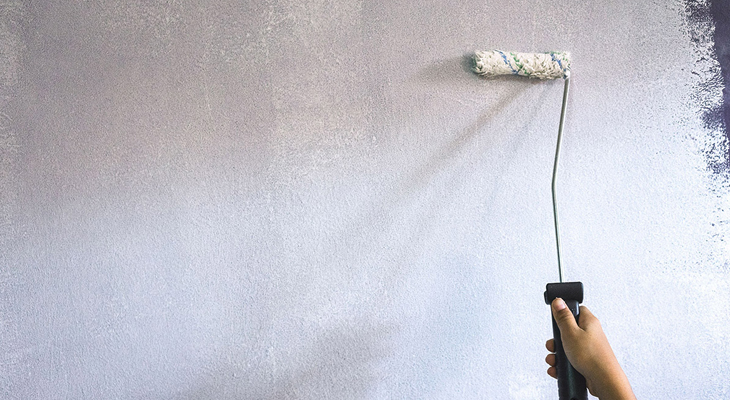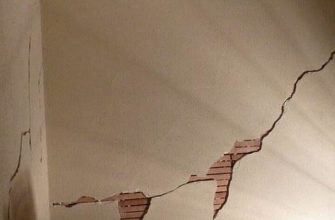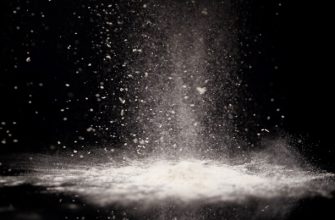Spackle refers to a sticky substance made up of binders and gypsum powder. It has a viscosity that is akin to toothpaste and is packaged and sold in a pre-mixed tub, bucket, or container.
It is frequently used to repair or fix damage done to walls. Simply slapping a layer of paint over the spackle will make the patches or spots of spackle stand out and look incredibly obvious to the viewers.
This happens due to the porous nature of spackle spots that their texture starts to differ and they become less bright than the surrounding wall.
Such an issue causes major problems, especially as it takes away substantially the quality of a wall’s or a room’s overall appearance after they have been damaged by an accident or excessive level of usage.
Also, when spackled places full of spots are not properly prepared and painted over, they frequently bleed through the layers of paint coat. This kind of phenomenon is referred to as “flashing” because it is such a prevalent occurrence.
Owing to all these reasons, after mending your wall, you must take a few extra precautions to ensure that the spackle spots are well-hidden and don’t look too obvious. Even after the wall has been damaged, these actions will be able to go a long way toward preserving the aesthetics of your wall or room.
However, with that said, a majority of individuals are stumped as to how to conceal spackle spots on their walls after they have repaired them.
So, here we are presenting some of the most effective tips for concealing spackle spots on your walls during a paint job.
Check to See if the Spackle Has Been Flush
The first tip of covering spackle spots is to match the texture of the spackle to the texture of the wall. If the wall is untextured, the spackle must be absolutely flush with the wall. Otherwise, the protruding section will appear intrusive.
To make the spackle spot flush in with the wall:
- Start by spreading the spackle out more than is necessary, i.e., even past the edges of the repairs during application.
- Make sure that you allow plenty of time for the spackle to dry after that.
- After it has dried completely, sand the area down till it is flush with the surrounding wall.
- Make sure you feel the region with your fingers.
- Checking for flushness with your fingertips rather than your eyes is far more dependable, as in this case, your sense of touch will be far more trustworthy than your sense of sight.
- When you feel the region, you’ll be able to tell when it’s flush with the wall.
Make Use of Primer on the Area
It is very essential to use a primer over the spackle spot before painting the wall, especially in the case of larger repairs.
This is because it is very much more likely that the spackle spots will stand out if you don’t apply a primer. The materials that make up the surrounding wall are less porous than spackle. Going without primer will result in the spackle spots to look as a dull spot on the wall’s surface due to the porous surface.
Thus, you must prime the spackle spots before you start painting the wall. This can help you stop the end result from looking more drab or duller than the rest of the areas of the wall.
You can skip the primer and go straight to the next tip if you only have a few small spackle spots.
Repair the Area Prior to Painting
When it comes to covering the spackle spots, another important tip is to start by painting the area where the repairs were completed. If you simply paint the entire wall, the spackle region will almost certainly have a different texture than the rest of the wall. This varied texture will have a significant impact on the wall’s look.
So, take this extra precaution of painting the wall’s repaired area first. This will make a significant difference in the appearance of the finished end result. Applying a light layer of paint coat to the mended or repaired area first can help you to ensure that the finished end result has a more consistent appearance.
Also, when working on such repairs to walls, it is especially vital to think about the products or supplies you will be using. So, you must use a small brush to cover the area that has been repaired with spackle in a thin layer of ordinary paint before pulling out the roller.
If you want to skip this tip, the texture of the area that is affected will be different from the rest of the wall once the work is finished.
Can Spackle be used on plastic
Coat the Wall With Paint
Now it is time for you to paint the entire wall using your roller.
If you want to effectively hide spackle marks in the room, you will need to paint the entire wall. Even if you accomplish all of the previous procedures for covering spackle spots, it is still quite possible that the spackle spots will still be visible if you don’t paint the entire wall.
Make sure you examine the mended or repaired area of the wall before applying the paint in the same way you would any other areas of it.
Painting the entire wall will also ensure that the paint is evenly distributed throughout the entire wall. A thorough painting job on the surface of the wall can offer a coherent impression.
Once everything has dried, the color and texture should look spot on and match perfectly.
If possible, we advise you to select a matte paint. The glossier your paint is, the more noticeable any flaws will be. Due to this, matte paint is the preferable option.
Hire a Professional to Do the Job.
An expert from a professional painting business company has all of the required experience and tools that are needed to give your wall a beautiful paint job.
Both repairing the wall and taking further precautions to cover the spackle spots on the wall can be an enormous amount of work and take an immense amount of your precious time.
When you hire a professional, you can get rid of the extra work you had to put up with and focus on other things. It will also ensure that your wall is returned to its former glory.
Spackle spots can be effectively hidden with the help of such professional services with the help of experts who have a high level of knowledge.
This will give the walls of your house or room the best possible sort of appearance.









